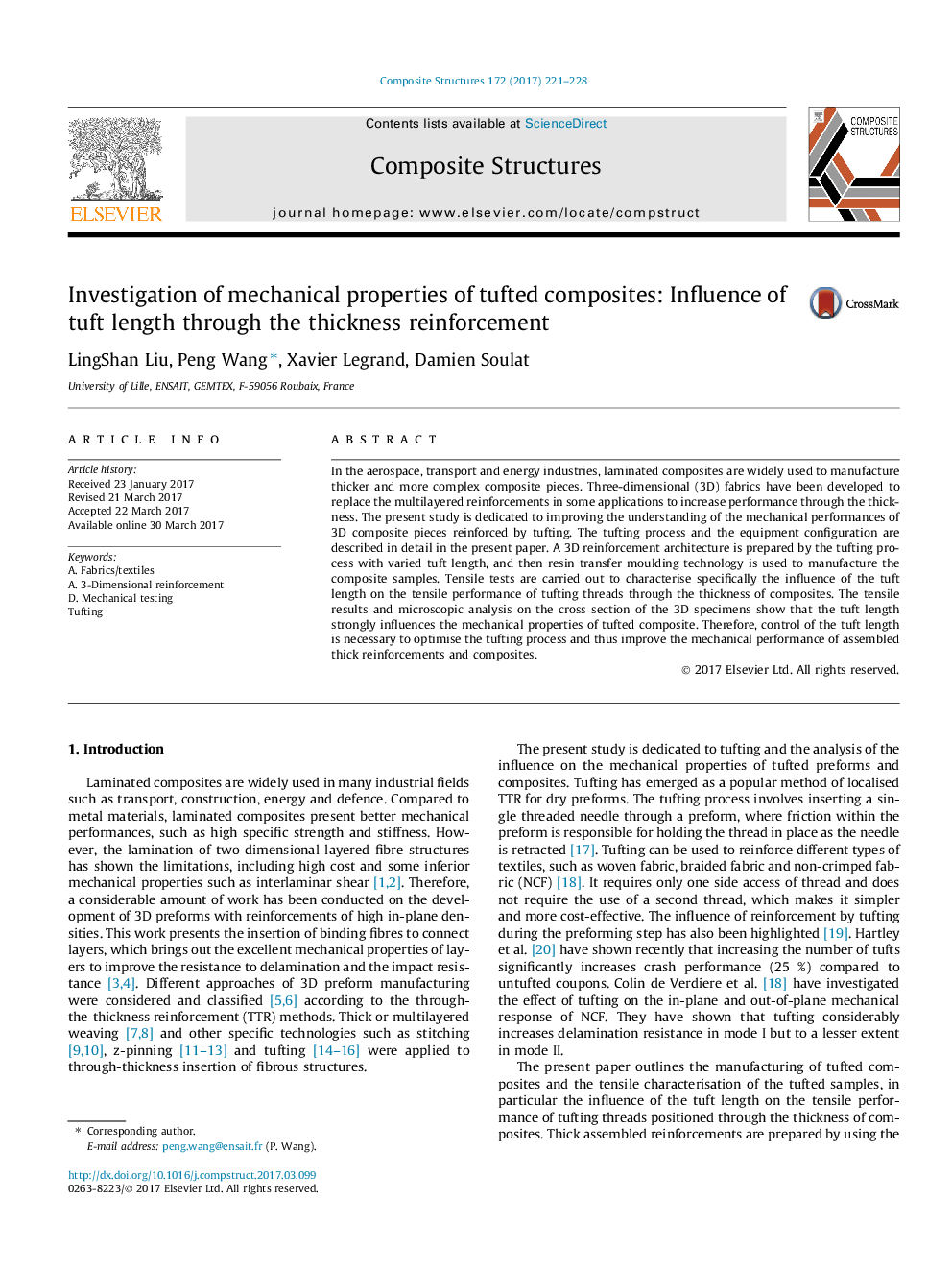| Article ID | Journal | Published Year | Pages | File Type |
|---|---|---|---|---|
| 4911933 | Composite Structures | 2017 | 8 Pages |
Abstract
In the aerospace, transport and energy industries, laminated composites are widely used to manufacture thicker and more complex composite pieces. Three-dimensional (3D) fabrics have been developed to replace the multilayered reinforcements in some applications to increase performance through the thickness. The present study is dedicated to improving the understanding of the mechanical performances of 3D composite pieces reinforced by tufting. The tufting process and the equipment configuration are described in detail in the present paper. A 3D reinforcement architecture is prepared by the tufting process with varied tuft length, and then resin transfer moulding technology is used to manufacture the composite samples. Tensile tests are carried out to characterise specifically the influence of the tuft length on the tensile performance of tufting threads through the thickness of composites. The tensile results and microscopic analysis on the cross section of the 3D specimens show that the tuft length strongly influences the mechanical properties of tufted composite. Therefore, control of the tuft length is necessary to optimise the tufting process and thus improve the mechanical performance of assembled thick reinforcements and composites.
Related Topics
Physical Sciences and Engineering
Engineering
Civil and Structural Engineering
Authors
LingShan Liu, Peng Wang, Xavier Legrand, Damien Soulat,
